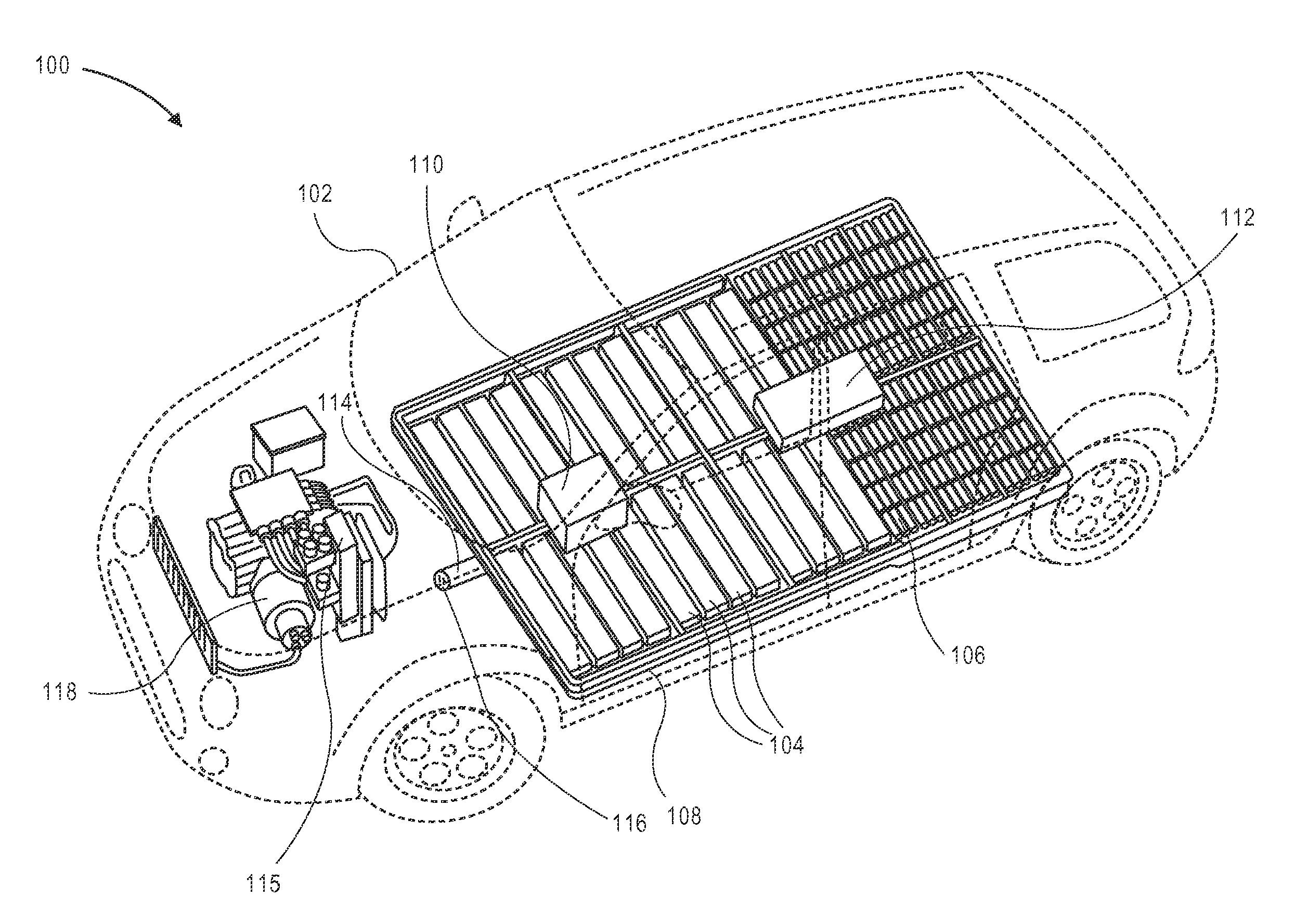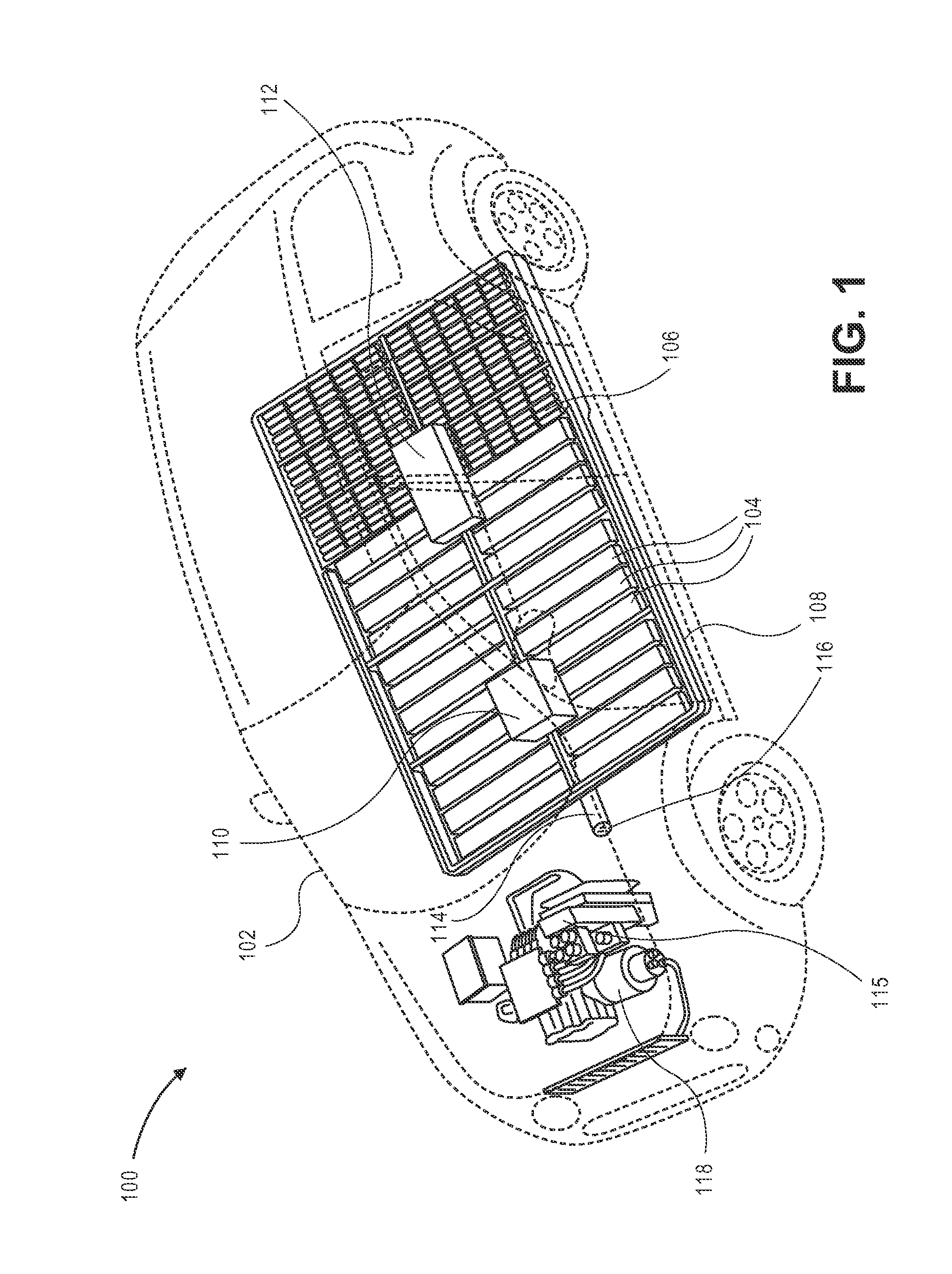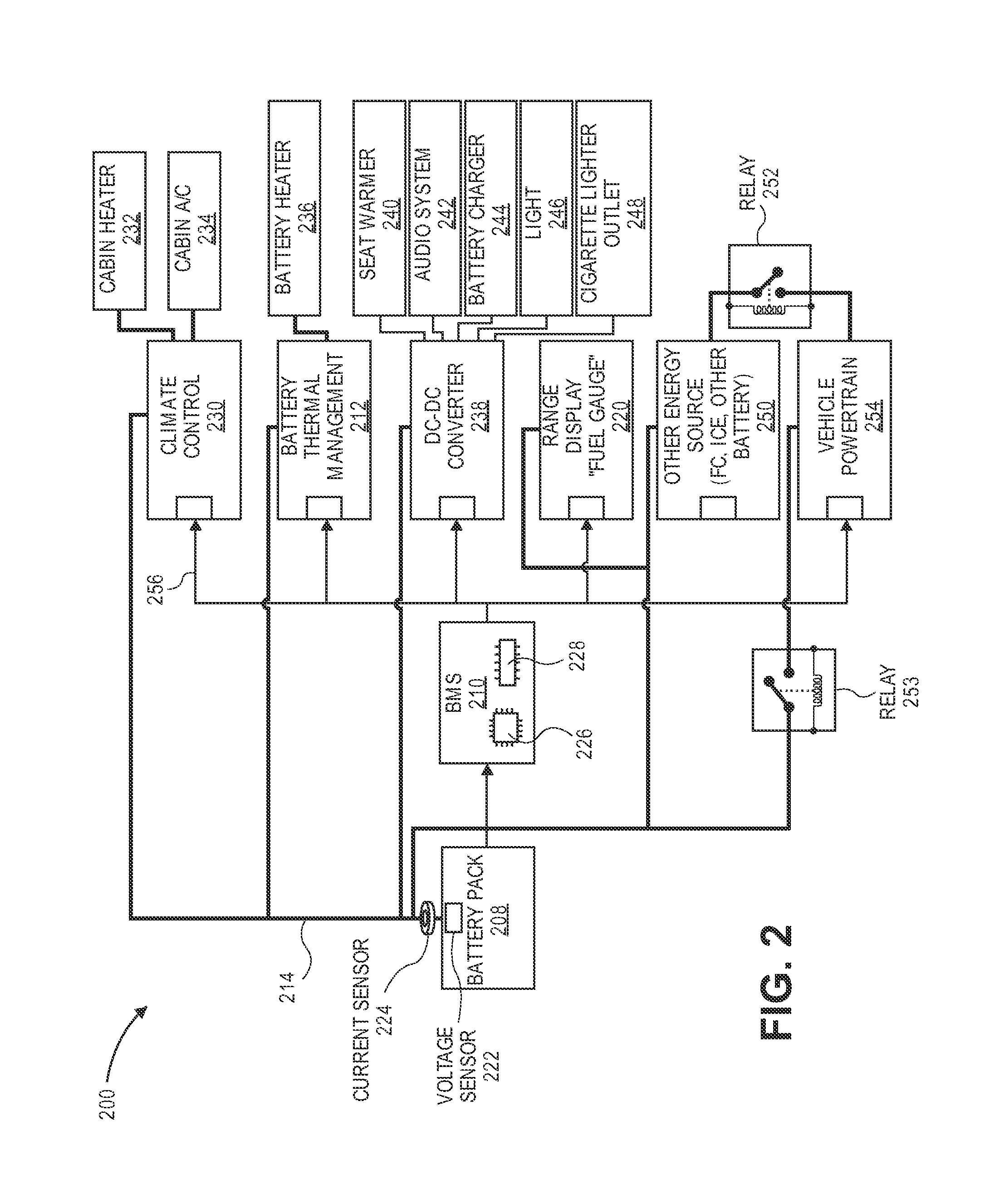Solid-state battery management using real-time estimation of nano material electrical characteristics
a technology of electrical characteristics and solid-state batteries, applied in the direction of digital data processing details, instruments, transportation and packaging, etc., can solve the problems of limiting or reducing the instantaneous power output capacity of batteries, preventing the widespread commercialization of rechargeable batteries in many applications, and many conventional battery devices insufficient in at least one of these respects for current and future automotive demands
- Summary
- Abstract
- Description
- Claims
- Application Information
AI Technical Summary
Benefits of technology
Problems solved by technology
Method used
Image
Examples
Embodiment Construction
[0041]The following description is presented to enable one of ordinary skill in the art to make and use the instant disclosure and to incorporate it in the context of particular applications. Various modifications, as well as a variety of uses in different applications, will be readily apparent to those skilled in the art, and the general principles defined herein may be applied to a wide range of embodiments. Thus, the present disclosure is not intended to be limited to the embodiments presented, but is to be accorded the widest scope consistent with the principles and novel features disclosed herein.
[0042]In the following detailed description, numerous specific details are set forth in order to provide a more thorough understanding of the embodiments described herein. However, it will be apparent to one skilled in the art that the present disclosure may be practiced without necessarily being limited to these specific details. In other instances, well-known structures and devices a...
PUM
 Login to View More
Login to View More Abstract
Description
Claims
Application Information
 Login to View More
Login to View More - R&D
- Intellectual Property
- Life Sciences
- Materials
- Tech Scout
- Unparalleled Data Quality
- Higher Quality Content
- 60% Fewer Hallucinations
Browse by: Latest US Patents, China's latest patents, Technical Efficacy Thesaurus, Application Domain, Technology Topic, Popular Technical Reports.
© 2025 PatSnap. All rights reserved.Legal|Privacy policy|Modern Slavery Act Transparency Statement|Sitemap|About US| Contact US: help@patsnap.com



